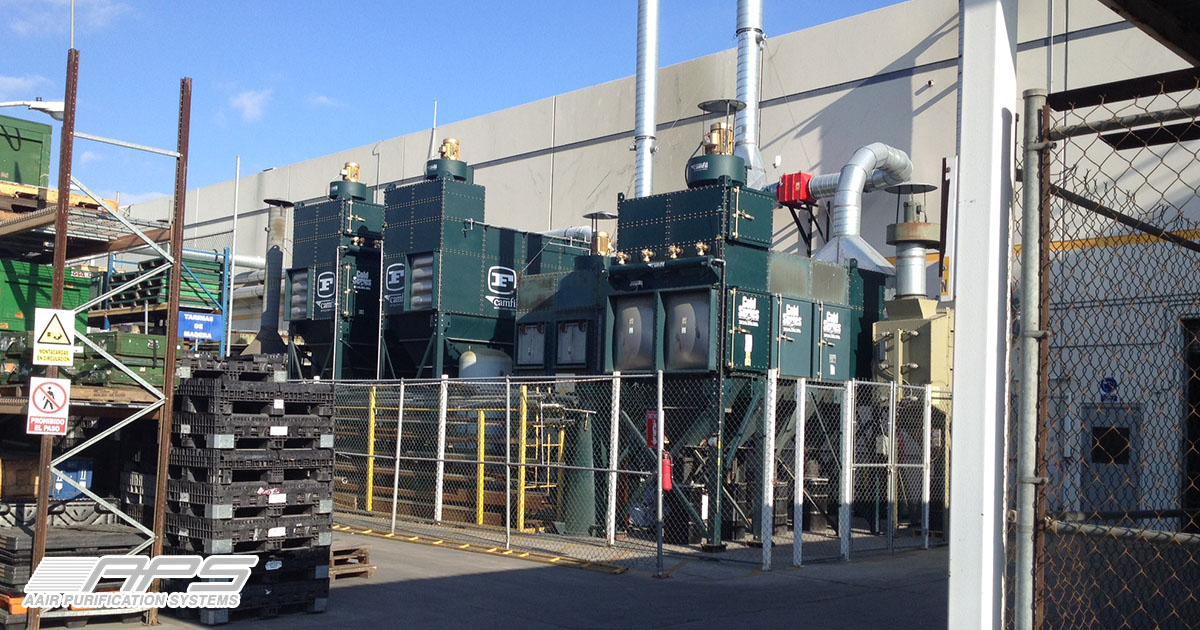
NFPA 68 Guideline for Dust Collector Safety
NFPA standards state that venting is an essential part of running industrial dust collectors safely. The NFPA 68 guideline set is the standard for explosion prevention through deflagration venting and contains guidelines on how such venting is to be accomplished when a fire develops inside the system.
In the absence of adequate deflagration venting, a dust collection fire may result in the quick accumulation of internal pressure in enclosed spaces, which is a sure recipe for an explosion. In the absence of a proper safe pressure outlet, the pressure is likely to damage the dust collector, even if an explosion does not result. Either way, without adequate ventilation, the loss of expensive equipment, damage to the facility, and the safety of workers are all on the line.
NFPA 68 on Explosion Venting for Dust Collectors
NFPA 68 makes it clear how dust collection systems should be configured to meet the standard. Its most important stipulation is that the venting capacity for a given system must protect people from injury by:
- Directing venting gasses away from areas where people are likely to be
- Preventing structural failure which leads to injury to nearby personnel
- Ensuring that can pose a health hazard are vented outdoors and away from personnel
NFPA 68 goes on to delineate how venting should be accomplished so as to prevent damage to equipment as follows:
- Prevent the ignition of nearby equipment, property, or materials
- Limit potential damage by allowing pressure to escape
- Direct potential projectiles away from people and sensitive equipment
Five Keys to Dust Collector Explosion Prevention
NFPA 68 outlines five key standards for the prevention of explosions within industrial dust collectors. For an explosion to take place within a dust collector, the following conditions are required:
- Fuel
- Accelerant
- Ignition
- Fuel cloud
- Enclosed space
Fuel
In most cases, the fuel is going to be the dust collected. Of course, it does not have to be the collected dust, but that is the most likely and most common fuel source for fires that lead to dust collector explosions. Every dust collector in use will have some available fuel.
Accelerant
The accelerant oxygen is always present, except in certain highly controlled conditions that are unlikely to be met in the average production center. Therefore, you can always consider one ingredient for an explosion to be present under any conditions.
Ignition
Ignition can be a spark from the collision of two metal objects. It can be an electrical arc, or it can be triggered by heat in the collected fuel source, the dust. Like a dry forest on a hot summer day, heat alone can be enough to complete the formula for an explosion.
Fuel Cloud
A fuel cloud is the condition obtained when the collected dust is diffused into the air inside the collector. This makes it possible that an ignition incident results in a pressurized explosion rather than a simple fire in an enclosed space. Any time a dust collector is in operation, the dust inside is likely to be in a cloud-like state.
Enclosed Space
Finally, we have the enclosed space. Without this, the pressure needed to create an explosion is not contained with the possibility of being suddenly and violently released. Without this element, all you will have is a fire, which is bad enough. Every dust collection system has at least one enclosed space where the process can be triggered.
Venting, when adequate, can prevent any one of these five conditions from being present, and if you remove even one, explosions are unlikely or impossible. Be aware that even with proper and adequate ventilation, an ignition event can still occur. However, NFPA 68 compliant ventilation will prevent any ignited materials from being contained, becoming pressurized, and suddenly succumbing to rapid, violent combustion.
NFPA 68 Compliant Safety Options
This regulatory standard offers several options for creating valid ventilation provisions. These include:
Crumple Zones: Like in a modern car, a crumple zone is a structural component designed to crumble up and absorb energy so that the energy is not directed into more sensitive zones. In a dust collection system, this would be a portion of the enclosed space which is designed to break easily. This disrupts the enclosure at low pressure so that pressure does not increase and create an explosion. These can also serve as a useful safety alert system, indicating that the collector should be shut down. These are most often referred to as burst panels.
Ducting: Most dust collectors located indoors include ductwork that leads outside. These can be equipped with flame-proof doors which will open when under pressure, creating a constant pressure relief system, so that a dangerous level of pressure in the enclosed space is never reached.
Flameless Vents: These act as flame arresters according to NFPA 68, and have the ability to stop flames. They retain particulates which can act as fuel and prevent burning material from making ingress into the enclosed portion of the unit.
Categorised in: Dust Collector Safety
